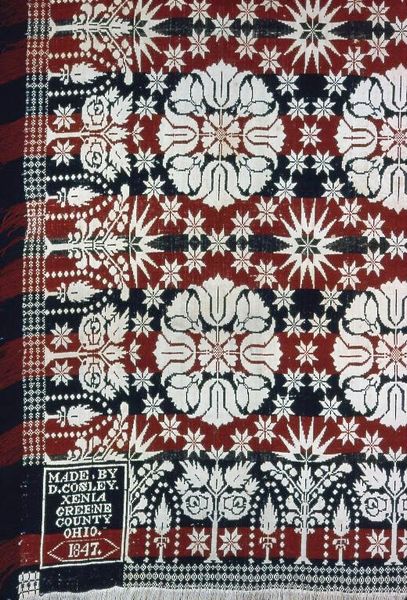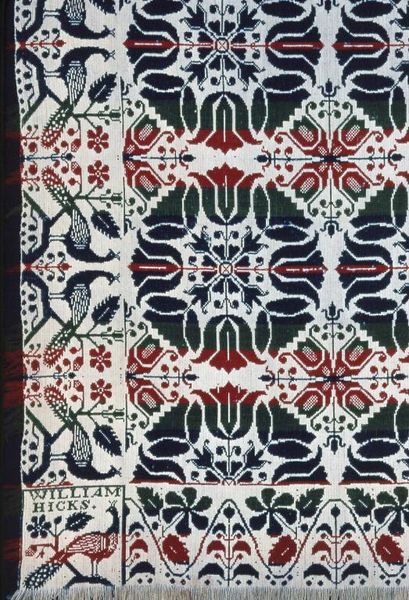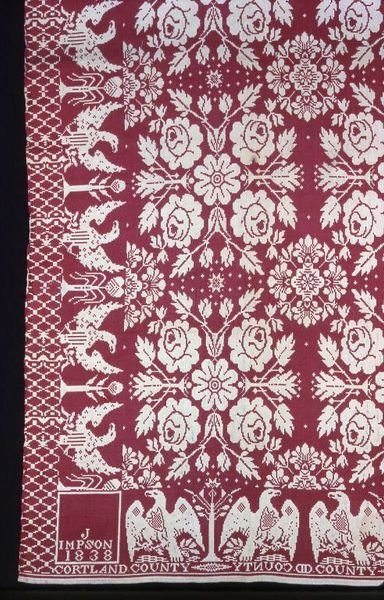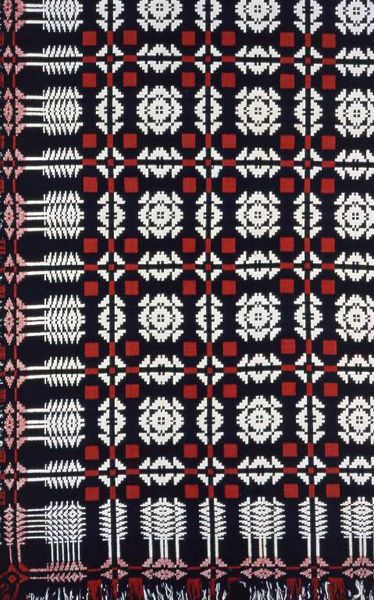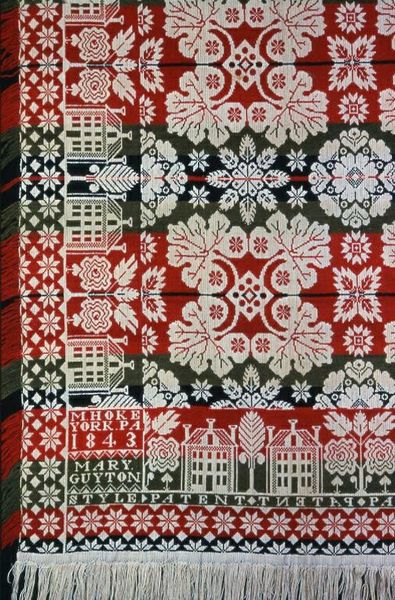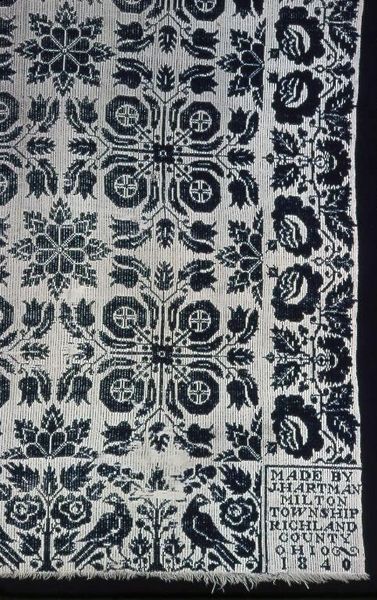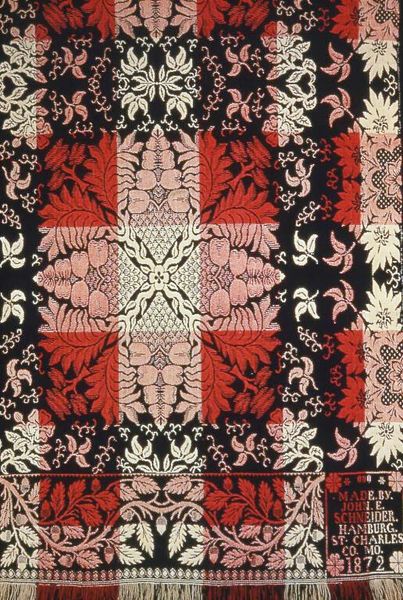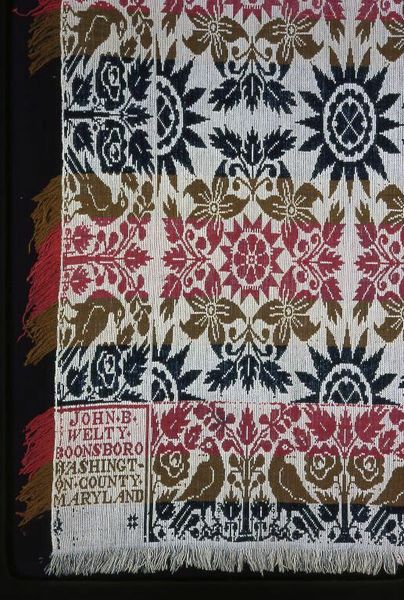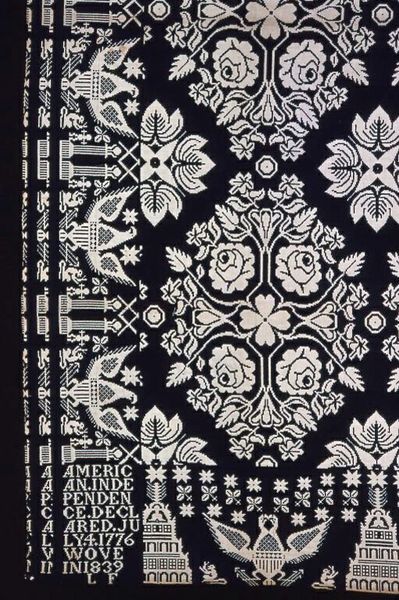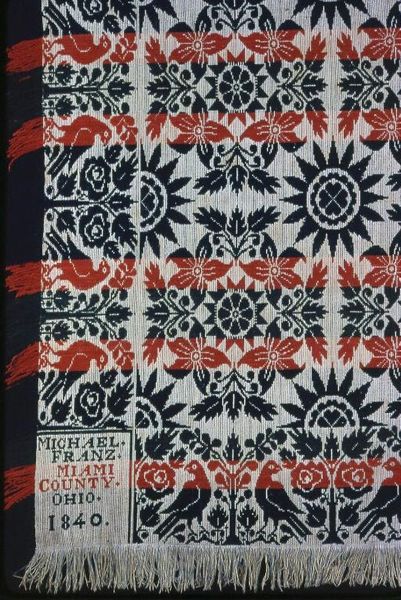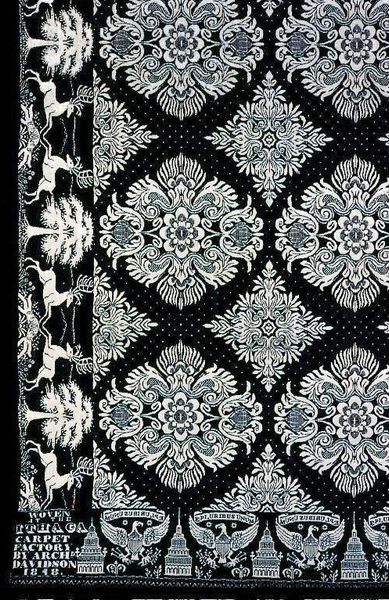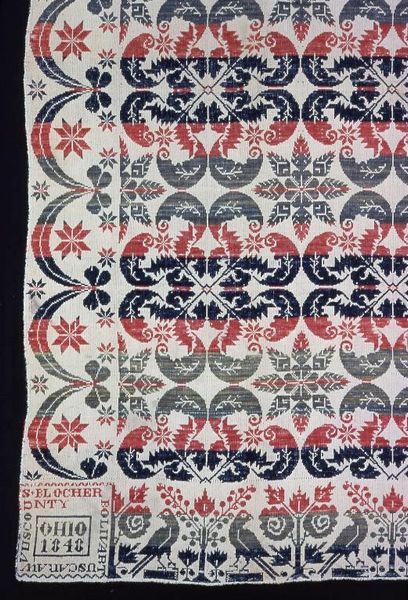
weaving, textile, wool
#
folk-art
#
weaving
#
textile
#
wool
#
folk-art
#
geometric
#
decorative-art
Dimensions: 68.1 × 80 cm (26 3/4 × 31 1/2 in.)
Copyright: Public Domain
Editor: So, this is the Coverlet, made in 1848 by Samuel Mundwiler. It’s a woven wool textile, and I'm really drawn to how it balances simple geometric shapes with more naturalistic elements like flowers and those cute little houses. What do you see in this piece that stands out? Curator: Oh, this Coverlet sings to me of home and hearth, literally! It's more than just a blanket; it’s a testament to someone’s life, community, and skill all rolled into one cozy package. Look at the repetition of those motifs – the houses, the roses, the geometric fillers – don't they remind you of the rhythms of daily life? Mundwiler wasn't just weaving fabric; he was weaving a narrative. I wonder, what stories do *you* think he was trying to tell? Editor: That's such a lovely thought. Maybe he wanted to record his home town as it grew, since that period was a transformative time in America. It’s beautiful, though, even with just the reds, whites, and blacks. I wouldn’t have thought of textiles as an active art form during that period! Curator: It’s easy to forget that before photography, textiles like this were *vital* ways to document and celebrate community identity. They're not passive objects; they’re active participants in cultural storytelling, whispered histories in every stitch. It’s funny, I find the coverlet almost painterly. Can you imagine transferring these textile qualities into other mediums like oils or photography? Editor: Absolutely. Seeing the care and creativity poured into it definitely makes me reconsider how I think about early folk art and decorative arts in general. Curator: Indeed. I'll never look at a blanket the same way again!
Comments
No comments
Be the first to comment and join the conversation on the ultimate creative platform.
